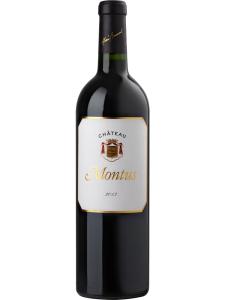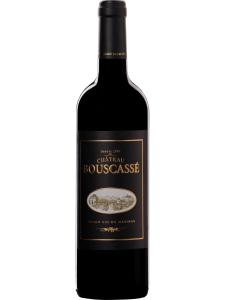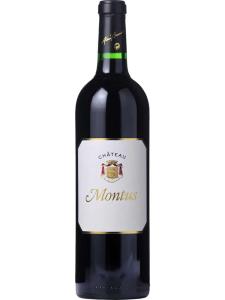Madiran is a village in the gently rolling countryside of Gascony, in the far south-west of France. The area is famous for its indulgent gastronomy and rich, concentrated, tannic Madiran wines. Gascon culinary specialties include magret de canard and cassoulet – rich, gamey foods that demand a wine match of serious character and structure. Fortunately, Gascony is the home of Tannat, a grape variety strong in structure, color, acidity and (as implied by its name) tannins.
By law, Tannat grapes must make up between 60% and 80% of any wine bearing the Madiran appellation. The remaining portion can be made up with any combination of the Bordeaux varieties Cabernet Sauvignon and Cabernet Franc (also known as Bouchy) and a little-known Gascon variety, Fer Servadou (known here as Pinenc). The Cabernet grapes – themselves relatively robust and tannic – are used to 'soften' the Tannat out, providing a clue to exactly how astringent pure Tannat is.
Abundant tannin is a key characteristic of almost all Tannat-based wines. Taming the astringency of these tannins (without removing any of the wine’s essential characteristics) is a key challenge for Madiran winemakers. Various techniques are used to this end. Destemming, in order to reduce the amount of woody tannin getting into the wines from stalks and stems, is mandatory. Barrel maturation is not mandatory, but is relatively common; some top-quality Madiran wines spend up to two years in new oak barrels. Other techniques include gentle pressing, which avoids bitter tannins leaching out from the pips, and micro-oxygenation, which promotes tannin polymerization (while also serving to stabilize the wine’s rich color).
Despite all of these efforts and measures, the typical Madiran wine becomes approachable only after several years’ cellaring. Patience is rewarded with rich, fruit-forward wines complex in both aroma and structure – the ideal food match for Gascon cuisine. Madiran’s sister wine (the two are produced from precisely the same area) is white Pacherenc du Vic-Bilh, which comes in both sweet and dry styles and is no less worthy of the local food, particularly foie gras.
The official Madiran viticultural area covers 37 parishes with such traditional southern-sounding names as Castelnau-Rivière-Basse, Séméacq-Blachon and Mascaraàs-Haron. It forms a roughly square area about 15 miles (25km) across, at the eastern edge of which lies Madiran village itself. Immediately to the north is Armagnac country.
Although a full 60 miles (100km) east of the Atlantic coastline, the climate here is generally warm and dry, but is measurably cooler and wetter than that further inland around Gaillac. The average annual temperature is 55F (12.5C), and annual rainfall is around 39 inches (1000mm), concentrated mostly in late winter and spring. A warm, sunny summer and long, dry autumn allow the vignerons to bring their Tannat grapes to full phenolic ripeness. This factor is absolutely essential for Madiran, as under-ripe Tannat grapes would be overwhelmingly, unmanageably tannic.
The Madiran landscape is made up of five large, parallel ridges that run roughly north-south, marking the transition between the foothills of the Pyrenees (the tall, narrow mountain range that separates France from Spain) and the Landes, the forest-laden coastal plains just south of Bordeaux. The most common soils here are limestone-rich clays and silts, relatively free-draining and rich in minerals. These are often studded with pebbles laced with iron and manganese oxide, which brings a reddish tinge to some vineyards. Originally from the Pyrenees, these soils have been washed down by mountain rivers over the millennia. The main river here is the Adour, which lies just to the east of Madiran village. Once vital to the wine trade in this area, the Adour connected the local vineyards with the port at Bayonne and the export markets beyond.
The Pyrenees are clearly visible from many Madiran vineyards and provide a constant reminder of Gascony’s southern location, far from Paris and the rest of France. Gascon heritage carries with it a strong pride, matched only by that found in Le Pays Basque (the French Basque country) just to the south-west. The two areas have more in common than southern pride, however; their wines are similar, and the vineyards planted with the same grape varieties. Madiran’s Basque equivalent, also made from Tannat and Cabernet grapes, is Irouleguy.




